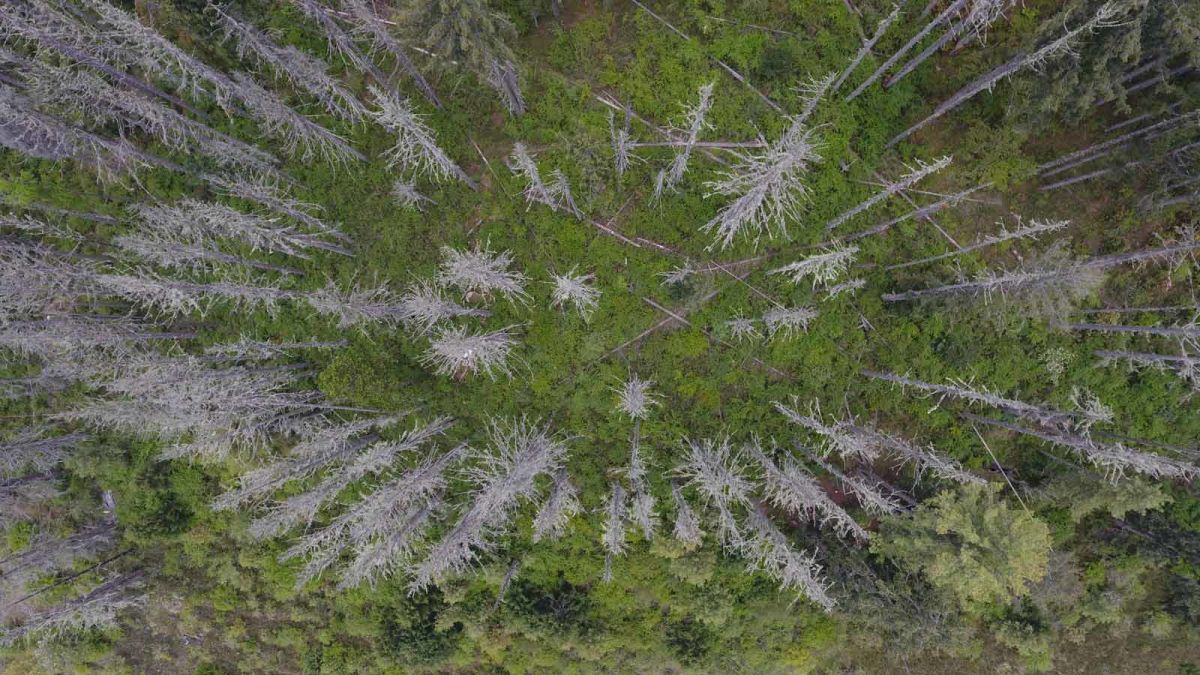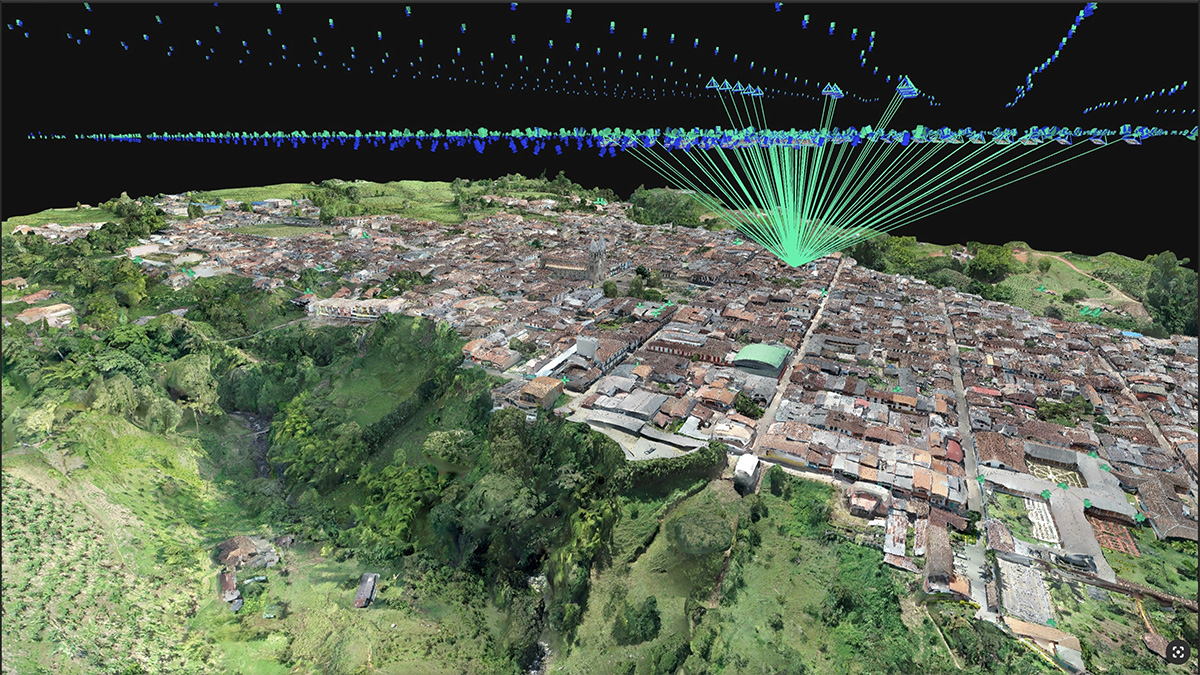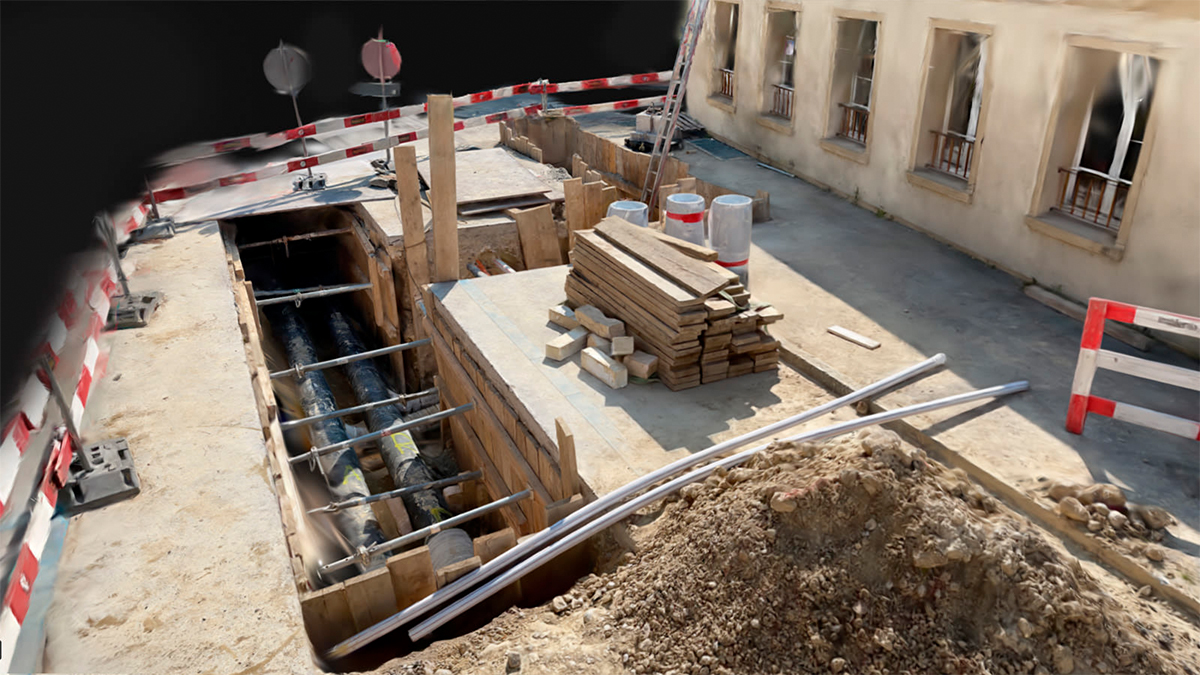Quantifying forest damage in Bhutan
The kingdom of Bhutan is one of the greenest countries in the world. Its 2.9 million hectares of forest - 71% of the country - sequester around three times the carbon its citizens produce.
Bhutan’s unspoiled landscapes vary dramatically. The country's elevation varies from 100 meters above sea level at the southern border with India, and above 7,500 meters at the northern border. The forests shift from subtropical in the southern foothills, to alpine scrub in the Himalayan north.
But as global temperatures increase and precipitation patterns shift, Bhutan's forest is undergoing dramatic changes. Species composition is changing, and the overall health of the forest is suffering.
We talked with Deputy Chief Forestry Officer Changa Tshering at Ugyen Wangchuck Institute for Conservation and Environment (UWICE) about their concerns and what new methods of surveying and monitoring in Bhutan's forested areas are being used. “What concerns us as conservationists is whether these dramatic changes or infestation are occurring in the remote or inaccessible area, unknown to us. If such things happen, by the time we detect it, it would have caused irreparable damage to our forest,” says Mr. Tshering.
Project details: Fighting for the forest
| Company | UWICE |
| Location | Bhutan |
| Project size | 25.83 hectares |
| Dataset | 331 images |
| Processing time | 4 hours |
| Hardware | DJI Phantom 4 |
| Software | Pix4Dmapper photogrammetry software |
| Project period | Results delivered within 48 hours |
| GSD | 4.34 cm |
This project is about testing drone technology in mapping and measuring the extent of damage caused by recent forest pests and diseases outbreak in some of the remotest parts of Bhutan's forest landscape. This is the first time that the UWICE team used drones for environmental projects.
Detecting bark beetle outbreak with drone mapping
An increasing area of forest trees is found to be dying, most prominently in a blue pine forest; the most commercially viable timber species. Massive bark beetle outbreak was reported from Haa, Bhutan in 2016. It was reported that the outbreak is spreading to other areas. However, the extent of damage was not mapped and measured due to steep and rugged terrain.
With a drone’s-eye-view, the problem is immediately apparent: the white trees are dead.
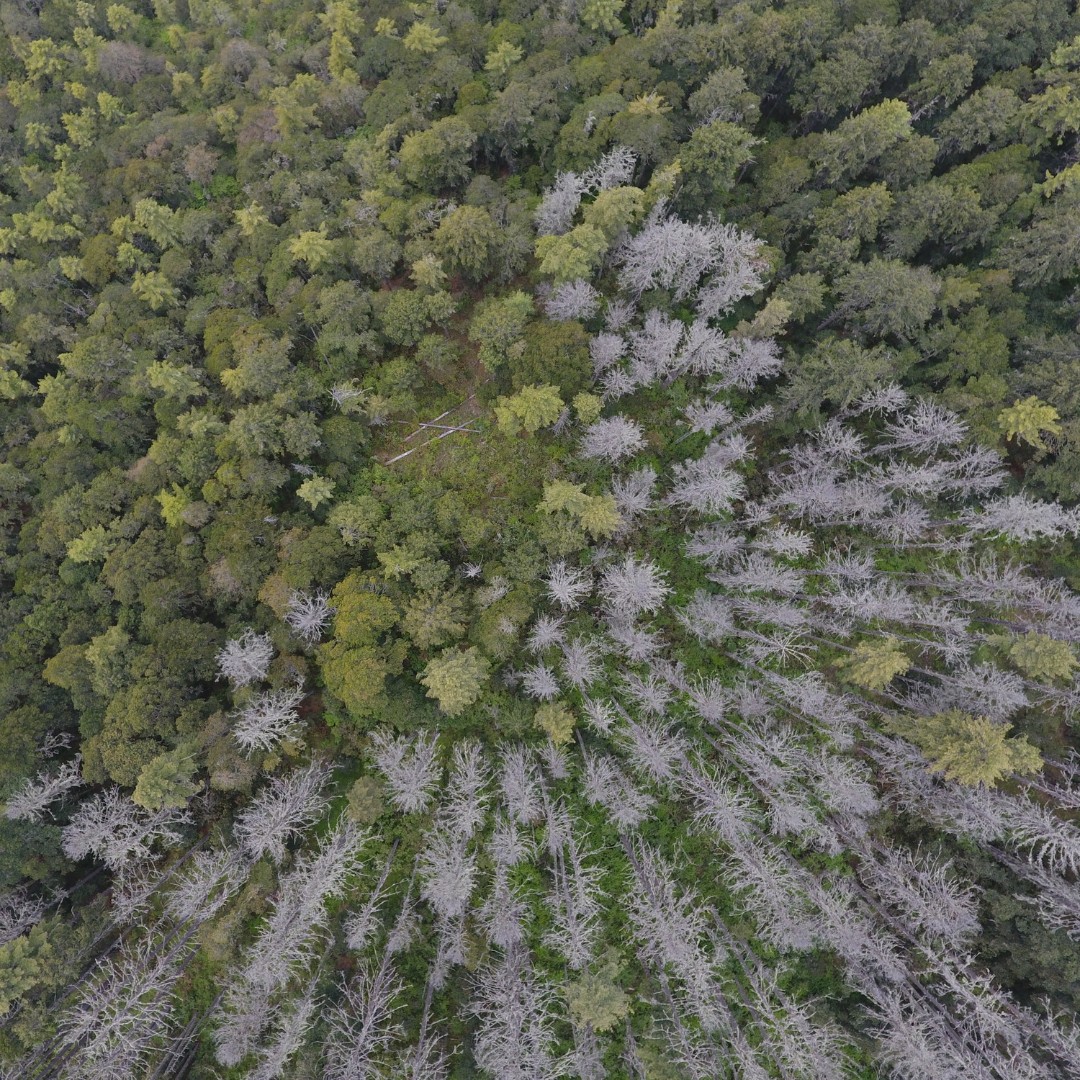
Drone technology seems to be one of the only feasible and economical ways to detect or spot early symptoms of forest under stress, located in an area that is disconnected from the road and inaccessible due to steep and rugged terrain. “Using drones, we not only surveyed some affected areas within a few hours but also revealed a very distinctive pattern of how the outbreak is spreading; radially from the center towards the edge. Such patterns can’t be seen from the ground,” points out Mr. Tshering.
Quantifying the damage with Pix4D
For the first time, the UWICE team could map and measure the area of damage from the rugged and steep terrain. This would serve as baseline data to monitor forest cover dynamics of that area. “With Pix4D photogrammetry software we could create an orthomosaic map that showed the extent of damage and also measure the area using the measurement tools and annotate areas where the new infestation has occurred. The processing was much faster and within a few hours we could get 3D mesh of an area and visualize it in 3D mode,” says Mr. Tshering.
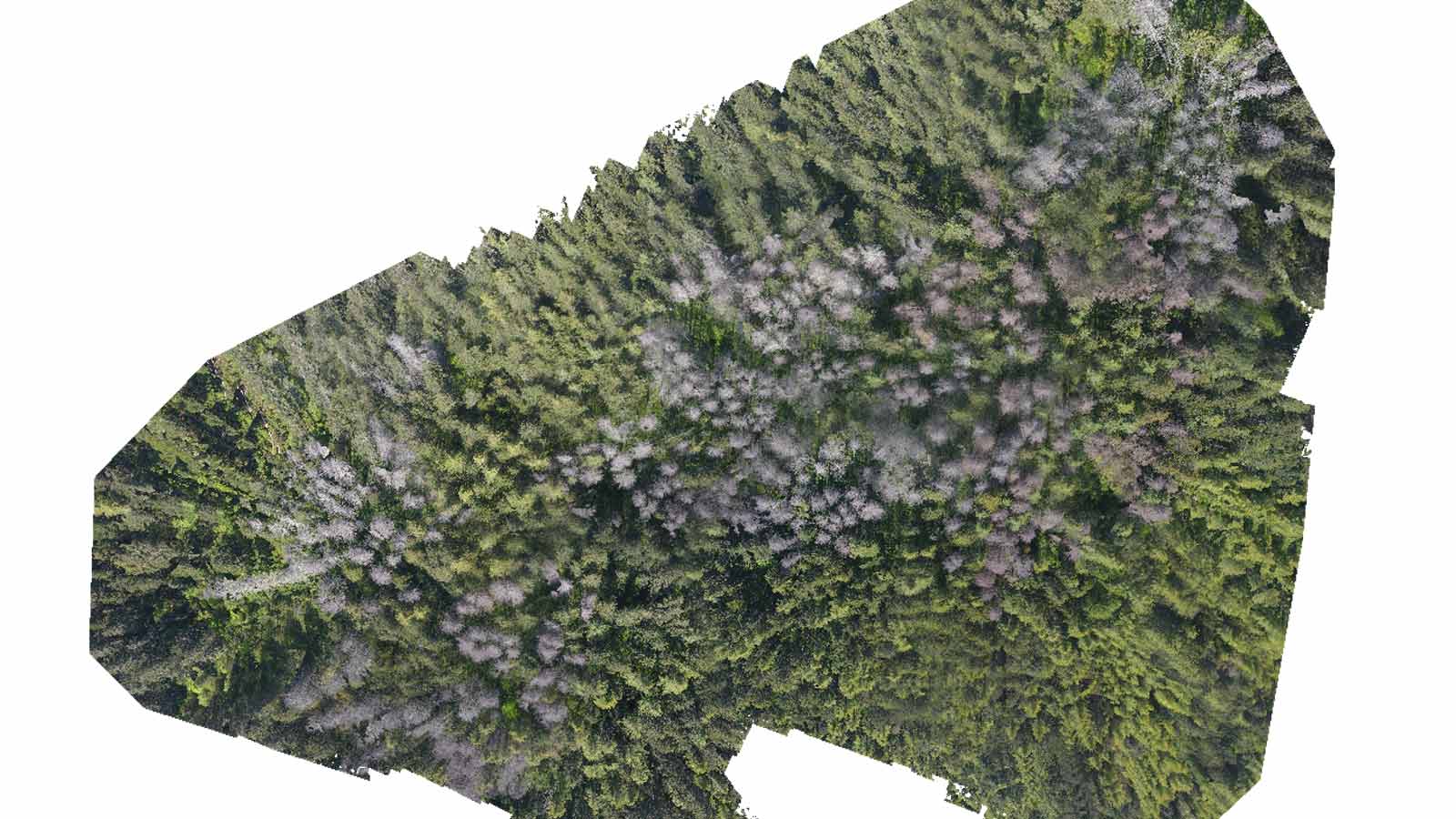
In 2019, the UWICE team was not able to return to the affected area but plan to go back in 2020. The planned drone flight will show how far the infection has spread and how the area is recovering after the prescribed felling operation carried out by the Department of Forestry. Areas that were less severely attacked by bark beetles had sanitization activities carried out to prevent the spread of diseases to other areas: mapping will indicate if these efforts were successful.
Mapping into the future
Going further, as part of forest health surveillance and research activities, the UWICE team wants to set up a system that would remotely monitor forest dynamics using satellite and drone technology supplemented by field observation wherever and whenever possible. The idea is to complement such activities by installing time-lapse cameras in some of the major forest ecosystems of Bhutan.
Such a system will not only allow them to detect and predict the pest and diseases outbreak in the forest, but also allow to prescribe appropriate management intervention to reduce the loss - both economically and environmentally.
